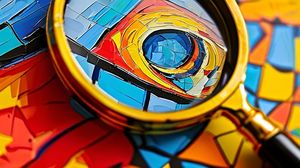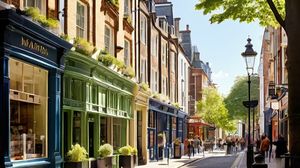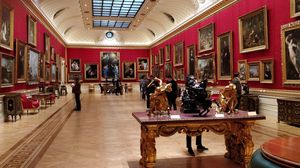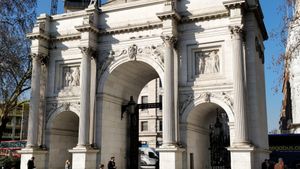
The Sherlock Holmes Museum in Marylebone is a legendary destination for fans of the famous detective created by Sir Arthur Conan Doyle. Dedicated to the life and times of Sherlock Holmes, this museum is housed at the world-renowned 221B Baker Street, a fictional address that now serves as a tangible celebration of one of literature's most iconic characters.
Step into the museum, and you will find a Victorian-style townhouse, meticulously recreated to resemble Holmes' and Dr. Watson's lodgings from Conan Doyle's stories. Each room is filled with authentic period decor, bringing the detective's adventures to life and giving visitors a sense of having stepped back in time.
One intriguing aspect of the museum is its attention to detail, with various personal items, such as Holmes' violin and chemistry equipment, carefully placed to mirror the Sherlockian world. It creates a sense of immersion that delights both devoted fans and casual visitors alike.
The museum also contains exhibits filled with references to the short stories and novels of Sherlock Holmes, from the infamous hound mentioned in "The Hound of the Baskervilles" to disguises Holmes might have worn in "A Scandal in Bohemia". These artifacts help to create an experience that blurs the lines between fiction and reality.
Interestingly, the building itself became a legal quirk when previously, 221B Baker Street did not exist before the museum claimed the address. In an amusing twist of time and fiction, the museum gave life to an address that fans had long sought to visit, even though it was originally fictional.
Among the many fascinating items on display is a wax figure of Holmes himself, capturing the detective in his typical thoughtful pose. Visitors often find themselves struck by the lifelike representation, as if Holmes himself might have just stepped into the room to solve the next great mystery.
The museum's intimate atmosphere allows for a unique and engaging experience that is particularly appealing for enthusiasts of both the literary and cinematic renditions of Sherlock Holmes. It's a small yet richly detailed space that continues to draw fans from around the globe.

Making the Most of Your Visit:
Try to visit during weekdays or early in the morning to avoid the biggest crowds. It can get quite busy, especially on weekends and during school holidays, so heading there when it's quieter will allow you to enjoy each exhibit more thoroughly.
Look out for the blue plaque that officially marks the museum as situated at '221B Baker Street', even though the actual address is 239 Baker Street. It's a fun little quirk that fans get a kick out of spotting.
The museum shop is worth a browse, especially if you're keen to pick up some unique Sherlock-themed souvenirs you won't find anywhere else. It's accessible without purchasing a ticket for the museum itself, so pop in even if you're short on time.
If you're a true Sherlock Holmes aficionado, take a moment to read the guest book—it's filled with notes from fans all over the world, and you might feel inspired to leave your own message for posterity.
Don't miss the opportunity to step into the rooms and really inspect the details, like the handwritten notes and Victorian-era artifacts. The staff does an exceptional job of creating an authentic atmosphere, so take your time to appreciate the finer details.

Visiting Times & Costs:
The Sherlock Holmes Museum is open to the public daily, providing an opportunity for visitors to explore the world of the famous detective.
Opening Hours: The museum typically operates from 9:30 AM to 6:00 PM, although it's always advisable to check for any changes that might occur during public holidays or due to special circumstances.
Admission Fees:
| Category | Price |
|---|---|
| Adults | £15 |
| Children (Under 16) | £10 |
Tickets can be purchased at the museum on the day of your visit. The museum shop has a separate entrance and can be visited without purchasing an admission ticket.
Accessibility: The museum is housed in a listed Victorian townhouse with narrow staircases and multiple floors, which may not be accessible to all visitors, including those with mobility impairments. It is recommended to plan accordingly and contact the museum staff for specific accessibility queries.

Address & Map:

Nearby:























